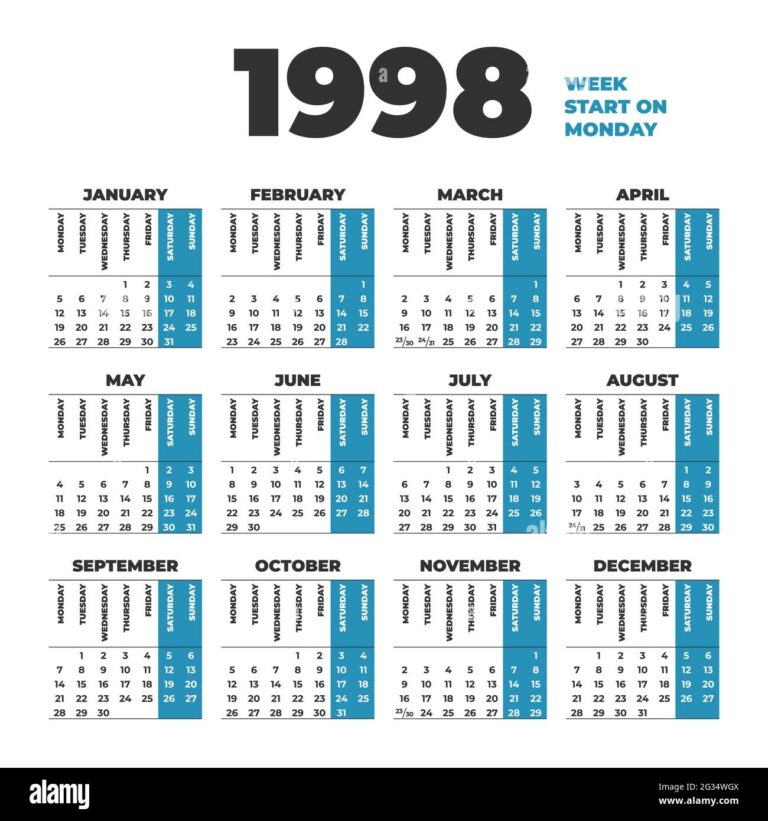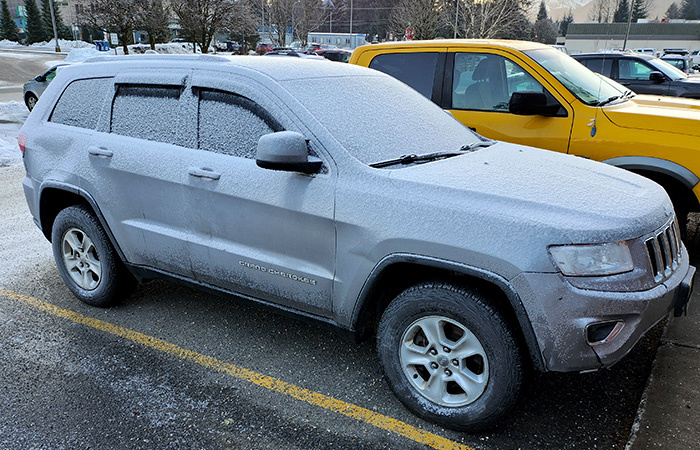The Enduring Icon: A Comprehensive Guide to the 1991 Jeep Cherokee (XJ)
The Enduring Icon: A Comprehensive Guide to the 1991 Jeep Cherokee (XJ) jeeps.truckstrend.com
In the vast landscape of automotive history, few vehicles have carved out a legacy as robust and enduring as the Jeep Cherokee, particularly the XJ generation. Among its most iconic iterations, the 1991 Jeep Cherokee stands as a testament to practical design, rugged capability, and surprising versatility. More than just a utility vehicle, the ’91 XJ represents a sweet spot in its production run, embodying the core principles that made the Cherokee a global phenomenon: a compact, unibody SUV that effortlessly blended everyday usability with legendary off-road prowess. For enthusiasts, collectors, or simply those seeking a dependable and character-filled ride, understanding the nuances of the 1991 Cherokee is essential to appreciating its continued relevance in today’s automotive world.
The XJ Legacy: Why the 1991 Model Stands Out
The Enduring Icon: A Comprehensive Guide to the 1991 Jeep Cherokee (XJ)
The Jeep Cherokee XJ, launched in 1984, was revolutionary for its time. It pioneered the unibody SUV concept, making it lighter, more fuel-efficient, and more car-like to drive than traditional body-on-frame SUVs. By 1991, the XJ had matured considerably, benefiting from years of refinement and the introduction of the highly coveted 4.0-liter High Output (HO) inline-six engine. This engine, a staple of Jeep’s reputation for durability, offered a significant boost in horsepower (190 hp) and torque (225 lb-ft) over its predecessors, cementing the XJ’s reputation as a powerful and reliable workhorse.
The ’91 model year also maintained the XJ’s practical dimensions, making it nimble enough for city driving yet spacious enough for passengers and cargo. Its solid axles front and rear, combined with a choice of robust 4×4 transfer cases – the Command-Trac (part-time) and Selec-Trac (full-time capable) – ensured it could tackle almost any terrain. This blend of on-road manners and off-road capability, all wrapped in a distinctive, boxy design, made the 1991 Cherokee an instant classic and a benchmark for future SUVs.
Key Features and Specifications of the 1991 Jeep Cherokee
Understanding the fundamental characteristics of the 1991 Cherokee is crucial for appreciating its capabilities and limitations.
- Engine Options:
- 4.0L High Output (HO) Inline-6: The most desirable engine, producing 190 horsepower and 225 lb-ft of torque. Known for its robust build, low-end torque, and incredible longevity.
- 2.5L Inline-4: A less common, more fuel-efficient option with 121 horsepower and 139 lb-ft of torque. Suitable for lighter duty but often considered underpowered for the vehicle’s weight.

- Transmission Options:
- AW4 Automatic (4-speed): The most common and highly regarded automatic transmission, known for its reliability and smooth shifts.
- AX15 Manual (5-speed): A robust manual transmission offering more direct control and better fuel economy for those who prefer it.

- Transfer Cases:
- NP231 Command-Trac: A part-time 4×4 system, meaning it should only be used in 4WD on loose surfaces to prevent driveline bind. Simple and very strong.
- NP242 Selec-Trac: A full-time capable 4×4 system, allowing the driver to use 4WD on any surface, including pavement. Offers more versatility but is slightly more complex.

- Suspension: Solid axle leaf spring rear and coil spring front, providing excellent articulation for off-roading and a surprisingly compliant ride for its ruggedness.
- Dimensions: Approximately 165 inches long, 70 inches wide, and 64 inches tall, with a wheelbase of 101 inches. These compact dimensions contribute to its agility on trails.
- Curb Weight: Varies by trim and drivetrain, but generally ranges from 3,000 to 3,400 pounds.
- Fuel Economy: Not a strong suit, typically ranging from 12-18 MPG combined, heavily dependent on engine, transmission, and driving style.
- Trim Levels: Available in various trims including Sport, Laredo, Limited, and Pioneer, offering different levels of comfort and features.
The Allure of Ownership: Benefits and Practicality
Despite its age, the 1991 Jeep Cherokee continues to attract a passionate following for several compelling reasons:
- Unmatched Off-Road Prowess: The XJ’s short wheelbase, excellent approach and departure angles, and solid axles make it an incredibly capable off-roader right out of the box. Its unibody construction, while often debated, offers rigidity and a lower center of gravity than many traditional body-on-frame SUVs.
- Legendary Reliability (with caveats): The 4.0L HO engine is renowned for its durability, often reaching 200,000, 300,000 miles, or more with proper maintenance. The AW4 automatic transmission is equally robust.
- Affordability: Initial purchase costs are relatively low, making it an accessible entry point into the world of 4x4s. Parts are also generally inexpensive and widely available.
- Vast Aftermarket Support: The XJ has one of the largest aftermarket support networks of any vehicle. Lift kits, armor, engine upgrades, interior components – if you can dream it, you can likely buy or fabricate it for an XJ. This makes it highly customizable for specific needs, from rock crawling to overland touring.
- Simplicity of Maintenance: Compared to modern vehicles laden with complex electronics, the XJ is relatively simple to diagnose and repair, even for the home mechanic. Its mechanical nature is a significant draw for those who prefer to work on their own vehicles.
- Practical Daily Driver: While not a luxury vehicle, the XJ offers a comfortable enough ride and ample interior space for daily commuting and family duties, especially for its size.
Common Issues and Solutions for the 1991 XJ
Like any vehicle of its vintage, the 1991 Cherokee is not without its quirks and common issues. Awareness and proactive maintenance are key to a positive ownership experience.
- Cooling System Vulnerabilities: The XJ’s cooling system is notorious for being borderline inadequate, especially in hot climates or under heavy load.
- Solution: Regular flushes, upgrading to a higher-capacity radiator (aluminum), replacing the water pump, fan clutch, and thermostat (195-degree is standard). Ensure the electric fan is operational.
- Rust: The unibody construction makes rust a significant concern, particularly in the rocker panels, floorboards, rear quarter panels, and subframe rails.
- Solution: Thorough inspection before purchase. For existing rust, repair, cut out and weld new metal, or apply rust converters/sealants. Regular cleaning, especially after winter or off-roading, helps prevent new rust.
- Oil Leaks: Common from the rear main seal, valve cover gasket, and oil filter adapter O-rings.
- Solution: These are common and usually not critical if minor, but replacement is necessary for significant leaks. The rear main seal is labor-intensive.
- Electrical Gremlins: Aging wiring, faulty grounds, and worn components can lead to issues with power windows, gauges, dashboard lights, and sensors.
- Solution: Check ground points (especially G106 behind the dashboard), inspect wiring harnesses for cracks or corrosion, and replace faulty switches or motors.
- Steering Wander/Death Wobble: A severe, uncontrollable shaking of the steering wheel, usually at highway speeds, caused by worn front-end components.
- Solution: This is often attributed to worn track bar bushings, tie rod ends, ball joints, control arm bushings, or incorrect alignment. A thorough inspection and replacement of worn parts, along with a proper alignment, will usually resolve it.
- Exhaust Manifold Cracks: Due to heat cycles, the stock exhaust manifold is prone to cracking, leading to an annoying ticking sound and potential exhaust leaks.
- Solution: Replacement with an aftermarket header or a new stock manifold.
- Sagging Leaf Springs: The rear leaf springs can sag over time, reducing ride height and load-carrying capacity.
- Solution: Add-a-leaf kits, full leaf spring replacements, or shackle relocators.
Buying, Owning, and Maintaining Your 1991 Cherokee
Acquiring and maintaining a 1991 XJ requires a thoughtful approach to ensure a rewarding experience.
What to Look For When Buying:
- Rust: This is paramount. Inspect the rocker panels, floorboards (under carpets), frame rails (especially near the front control arms), and rear quarter panels. Significant rust can be a deal-breaker or require costly repairs.
- Engine Condition: Listen for strange noises (knocks, ticks, excessive lifter noise). Check for oil and coolant leaks. Ensure the engine starts easily and idles smoothly. Check the color of the exhaust smoke.
- Transmission: Test drive to ensure smooth shifts (automatic) or proper clutch engagement (manual). Check for fluid leaks. Engage 4×4 to ensure transfer case functions correctly.
- Suspension & Steering: Look for worn bushings, loose steering components. Perform a "dry steering test" (have someone turn the wheel while you look at the linkages). Test for death wobble.
- Electrical: Test all lights, gauges, windows, and HVAC.
- Maintenance History: A well-documented history is a huge plus, indicating a caring owner.
- Previous Modifications: Be wary of poorly executed modifications, especially lift kits or major drivetrain changes.
Essential Maintenance Tips:
- Fluid Changes: Regular oil changes (every 3,000-5,000 miles), transmission fluid and filter (every 30,000 miles), differential fluids (front and rear), and transfer case fluid.
- Cooling System: Flush and refill coolant every 2-3 years. Inspect hoses, radiator, water pump, and fan clutch regularly.
- Greasing: Regularly grease all steering and suspension components with grease fittings.
- Tires: Rotate tires every 5,000-7,500 miles and maintain proper pressure.
- Brakes: Inspect pads, rotors, and fluid regularly.
- Spark Plugs/Air Filter: Replace as per manufacturer recommendations.
- Ignition System: Inspect distributor cap, rotor, and spark plug wires for wear.
Modding Your XJ:
The XJ is a blank canvas for modifications. Popular upgrades include:
- Lift Kits: Ranging from 2-6 inches to clear larger tires.
- Larger Tires: Improving ground clearance and traction.
- Aftermarket Bumpers & Armor: For protection and recovery points.
- Winches: Essential for self-recovery off-road.
- Lockers: For enhanced traction in extreme conditions.
- Gearing: To compensate for larger tires and restore power.
Always research thoroughly and invest in quality parts and professional installation if you’re not experienced.
Pricing Guide for a 1991 Jeep Cherokee
Pricing for a 1991 Jeep Cherokee can vary wildly depending on condition, mileage, trim level, engine/transmission combination, and geographic location. The market for XJs is highly speculative, with pristine examples fetching significant premiums.
| Condition Category | Estimated Price Range (USD) | Key Factors |
|---|---|---|
| Poor / Parts Car | $500 – $2,000 | Significant rust, major mechanical issues, incomplete, non-running, or major repairs needed. |
| Fair / Project | $2,000 – $5,000 | Runs and drives but needs substantial mechanical work, bodywork, or rust repair. Daily driver potential with effort. |
| Good / Driver | $5,000 – $10,000 | Solid running condition, minimal rust, all systems functional. May have cosmetic flaws or minor issues. Good daily driver. |
| Excellent / Pristine | $10,000 – $18,000+ | Exceptionally well-maintained, minimal to no rust, low mileage, all original or tastefully restored. Collector’s item. |
Factors Influencing Price:
- 4.0L HO Engine with AW4/AX15: Most desirable combination.
- 4×4 vs. 2WD: 4×4 models command higher prices.
- Rust-Free Body: The single biggest factor for value retention.
- Maintenance Records: Comprehensive history adds significant value.
- Trim Level: Limited and Laredo models often fetch more than base Sport/Pioneer.
- Existing Modifications: Quality, desirable mods can increase value, but poorly done ones can decrease it.
Frequently Asked Questions (FAQ) about the 1991 Jeep Cherokee
Q1: Is the 1991 Jeep Cherokee a reliable vehicle?
A1: Yes, especially models equipped with the 4.0L High Output inline-six engine and AW4 automatic transmission. These powertrains are known for their exceptional durability and longevity, often reaching well over 200,000 miles with proper maintenance. However, like any older vehicle, regular maintenance is crucial to its reliability.
Q2: What is the best engine for the 1991 Cherokee?
A2: The 4.0L High Output (HO) inline-six engine is overwhelmingly considered the best. It offers a great balance of power, torque, and legendary reliability, making it ideal for both daily driving and off-road adventures.
Q3: What kind of fuel economy can I expect from a 1991 XJ?
A3: Fuel economy is not a strong suit. Most 4.0L 4×4 models will average between 12-18 miles per gallon (MPG), depending on driving style, terrain, and modifications (like larger tires or lift kits).
Q4: Is the 1991 Cherokee good for off-roading?
A4: Absolutely! The XJ is renowned for its off-road capability. Its compact size, solid axles, short overhangs, and robust 4×4 systems (Command-Trac or Selec-Trac) make it highly capable on trails, rocks, and mud.
Q5: Are parts still available for the 1991 Jeep Cherokee?
A5: Yes, parts availability is excellent. Due to the XJ’s long production run (1984-2001) and enduring popularity, both OEM and a vast array of aftermarket parts are readily available. Salvage yards are also a good source for used components.
Q6: What is "death wobble" and how do I fix it on an XJ?
A6: "Death wobble" is a violent, uncontrollable shaking of the steering wheel, usually occurring at highway speeds after hitting a bump. It’s almost always caused by worn or loose components in the front steering and suspension system, such as the track bar, tie rod ends, ball joints, or control arm bushings. Fixing it involves diagnosing and replacing the worn components, followed by a proper alignment.
Q7: Can a 1991 Jeep Cherokee be a daily driver?
A7: Yes, many 1991 Cherokees are still used as daily drivers. While they lack the modern comforts and fuel efficiency of newer vehicles, their robust construction, relative simplicity, and distinct character make them perfectly capable for everyday commuting, especially if well-maintained.
Conclusion
The 1991 Jeep Cherokee is more than just a vintage SUV; it’s a testament to a golden age of utilitarian design and robust engineering. Its enduring appeal lies in its straightforward nature, legendary reliability, and unparalleled customizability. Whether you’re an off-road enthusiast looking for a capable trail rig, a classic car collector seeking a unique piece of automotive history, or simply someone who appreciates a vehicle built to last, the ’91 XJ offers a compelling blend of practicality and adventure. With careful selection and consistent maintenance, a 1991 Jeep Cherokee can continue to be a loyal companion for years to come, reminding us that sometimes, the simplest designs are the most enduring.




